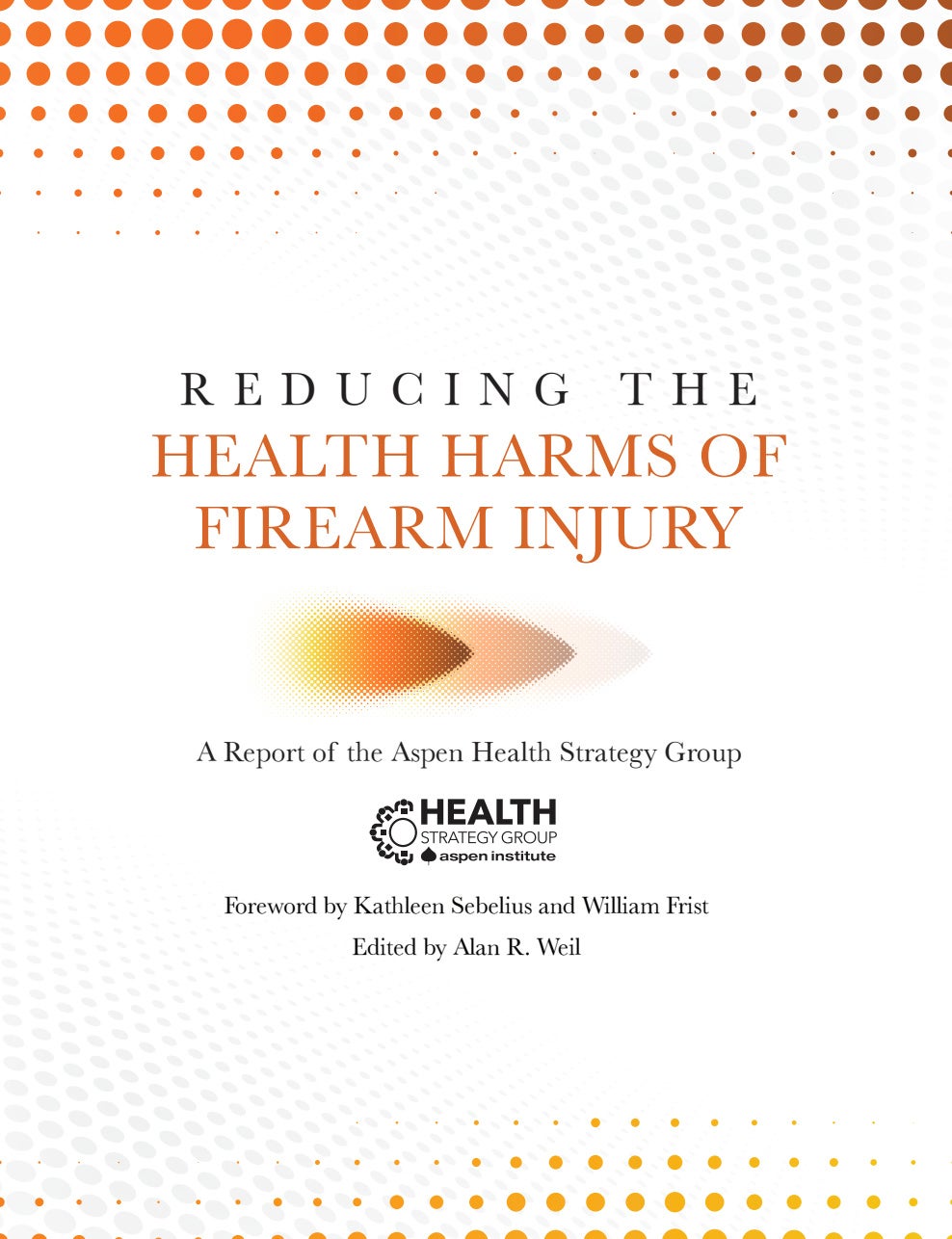A new report released by the nonpartisan Aspen Health Strategy Group (AHSG), an initiative of the Aspen Institute, examines the urgent need to reduce firearm injury and proposes opportunities for leaders in the health sector to curb it. “Reducing the Health Harms of Firearm Violence” is the product of a year-long, in-depth study and the consensus of 19 senior leaders in the public and private sectors.
The report advances “Five Big Ideas” to reduce the health harms associated with firearms:
- The health sector should lead in efforts to reduce the harms of firearm injury.
- The right to keep and bear arms should be understood to encompass responsibilities that promote firearm safety.
- Firearms should be less readily available to people at risk of self-harm or harming others.
- Models that reduce levels of community violence should be supported and expanded.
- The nation should close the information gaps that impede our ability to reduce firearm injury.
As part of their research, AHSG members heard from individuals directly affected by firearm violence. A ten-year-old survivor of the Uvalde, Texas school shooting joined the conversation with her mother to recount the trauma. Gregory Jackson, now deputy director of the White House Office of Gun Violence Prevention, recounted being treated as a criminal rather than a victim by law enforcement officials after being shot.
Further context came from a package of background papers, included in this report, that provided an overview of the causes and consequences of gun violence, the American culture of guns, and the use of harm reduction and community intervention techniques to curb violence.
Five themes emerged in the group’s discussions that helped guide the development of the big ideas:
- Firearm injury is a health crisis.
- The majority of Americans support approaches that can significantly reduce firearm injury and death.
- Reducing the harms of firearm injury requires a multifaceted response.
- We know enough to act, even as we need to learn more.
- Incremental progress is valuable.
The report shines a light on the epidemic proportion of firearm injury in the United States—more than 48,000 Americans lost their lives to firearms in 2021, twice that many were injured, and millions more experienced the trauma associated with such violence.
The report concludes with a call for “the health sector to lead, and the Biden administration, Congress, states, and localities to recognize the tremendous health burdens of firearm injury and take specific steps to reduce those burdens.”


